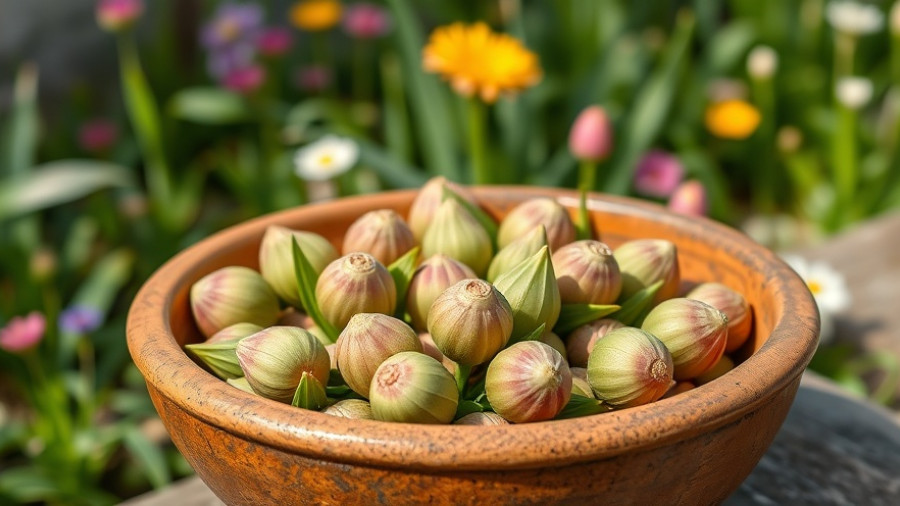
Why Wisteria Leaves Turn Yellow: A Gardener's Guide
Wisteria is often celebrated for its stunning blooms that decorate gardens with cascades of lilac flowers, bringing an almost romantic touch to any outdoor space. However, many gardeners, especially those new to cultivating this enchanting plant, may find themselves worried when the lush green leaves of their wisteria begin to turn yellow. Renowned gardener Alan Titchmarsh recently addressed this concern in his YouTube series, ‘Gardening with Alan Titchmarsh’, where he emphasizes that this yellowing is common and often not a cause for panic.
The Nutritional Needs of Wisteria
Titchmarsh explains that several factors contribute to the yellowing of wisteria leaves, particularly environmental conditions like hot weather and poor soil quality. He points to chlorosis, which refers to a lack of chlorophyll leading to pale or yellow leaves. This condition often arises from nutrient deficiencies, particularly in alkaline soils, which is a common occurrence in many regions of London. A simple remedy he suggests is to nourish the plant with a liquid feed directly to its roots. This intervention can restore the lush foliage that wisteria is known for.
Mastering the Art of Pruning
Pruning is essential for promoting healthy growth in wisteria, and Titchmarsh provides straightforward advice on the best timing and techniques. “Wisteria requires **twice-a-year pruning**: once in January and again in summer,” he notes. During the winter prune, gardeners should cut shoots back to around finger length above a bud. In summer, longer shoots should be trimmed to approximately 30cm, allowing the plant to channel its energies into producing stunning flowers rather than excessive foliage. This two-pronged approach ensures gardeners will enjoy vibrant blooms season after season.
Plant Care Beyond Pruning and Feeding
In addition to adequate feeding and proper pruning, Titchmarsh offers a plethora of advice for wisteria care. He cautions against attempting to grow this plant from seed, as the success rate can be disappointing. Wisteria can often be “flower shy,” meaning that seedlings may take years to mature without producing flowers. Instead, he recommends cutting off seed pods post-bloom to prevent energy drain from the plant, channeling those resources back into its overall health.
Wisteria: A Commitment in the London Garden
Young homeowners in London who are eager to incorporate wisteria into their gardens should consider the space needed for growth and the variety of care it requires. In congested urban settings, space might be at a premium, making it critical to choose an appropriate location where the plant can spread effectively while adding aesthetic value to the property.
Practical Tips for Wisteria Enthusiasts
- Feed regularly: If you notice yellow leaves, act quickly by applying liquid feed to the roots.
- Follow a pruning schedule: Make it a habit to prune your wisteria twice a year to promote flowering.
- Do not sow seeds: It’s safer to propagate through cuttings, ensuring beautiful blooms without the uncertainty of seed germination.
- Train your wisteria: Use supports to guide its growth direction, enhancing its beauty and bloom potential.
Concluding Thoughts: Beautifying Your Garden
Taking care of wisteria can seem overwhelming at first, especially for young homeowners focused on creating a beautiful and inviting garden space. However, with expert advice from Alan Titchmarsh and a commitment to proper feeding and pruning, you can enjoy the splendor of wisteria flourishing in your garden.
As your wisteria begins to bloom beautifully, it will not only enhance the exterior of your home but create a warm environment for gatherings and relaxation. Embrace the tips shared here to nurture your wisteria, and savor the sense of accomplishment that comes from watching your green space thrive.
For more insights and community stories on nurturing your garden and home, explore local gardening groups or join a community workshop focusing on sustainable living and plant care. Explore the vibrant world of wisteria and get inspired to enhance your outdoor setting!
 Add Row
Add Row  Add
Add 




Write A Comment